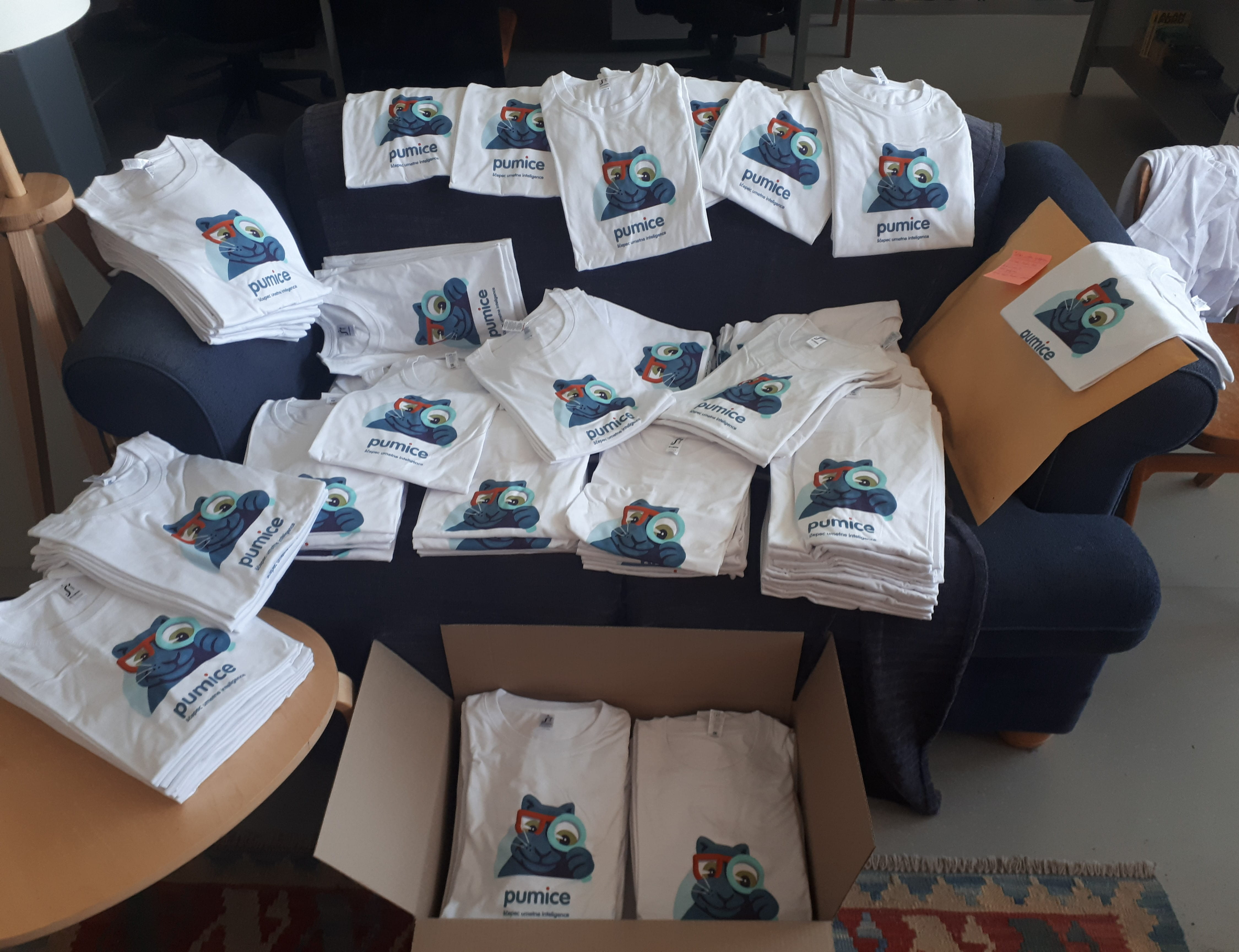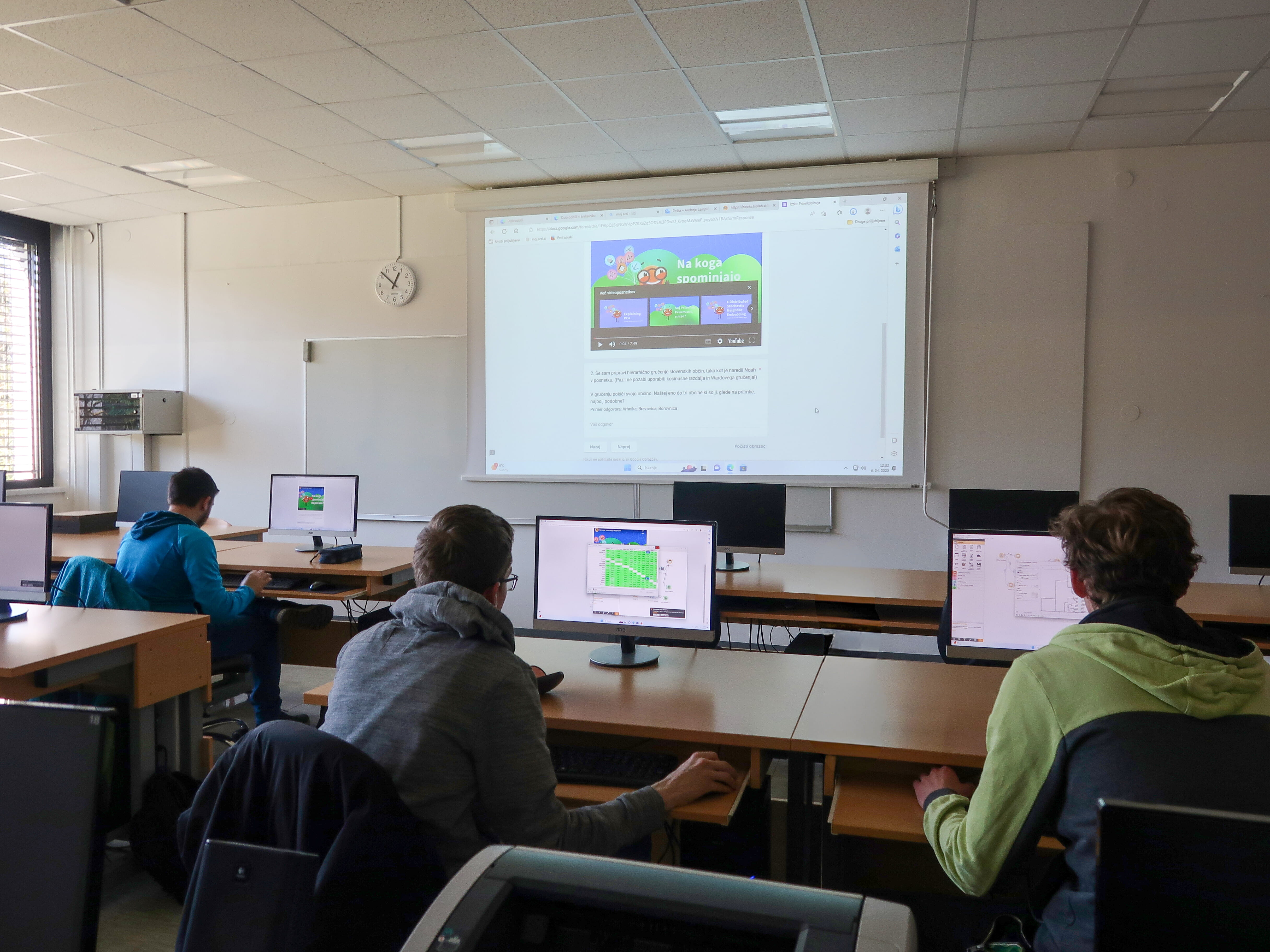education
Pumice challenge
Anja Mejač, Janez Demšar
May 26, 2023

What does it take to convince almost 1000 Slovenian students in K6-12 to learn about box plots, hierarchical clustering and the choropleth, and use them to explore a part of Slovenian geography and history?
Answer: it takes an interesting challenge. Plus, a couple of videos and some material for teachers. T-shirts don't hurt, either.
Artificial intelligence is gaining in importance and media exposure. With the future of economy and society relying on it, we must teach about it in schools. Yet school curricula are already filled with too many other subjects and schools, frankly, lack teachers with necessary skills.
Project Pumice ("Pouk s ščepcem umetne inteligence", Teaching with a Pinch of Artificial Intelligence) (link to Slovenian site) aims to introduce artificial intelligence into different school subjects, from history and biology to languages. The idea is that learning is more fun if students discover facts on their own, by exploring data related to particular topics.
To move the project into a higher gear, we have prepared a challenge. We selected data on 100,000 Slovenes with the 200 most common surnames, their approximate locations on the map, and the corresponding municipalities. The challenge consisted of four parts, each containing a short video followed by a question that participants had to answer using the knowledge gained from watching the video. They range from simply observing the most common surname in the particular school's region to clustering the country according to cosine similarity of surname distributions.
The task is interesting because Slovenia, although small (~20,000 square kilometers, and a population of two million) still has pronounced differences in surnames in different regions that stem from geographical boundaries, like mountain ranges, and, even more, in historical divisions and economic relations with neighbouring countries in the past. On the side of AI, exploring this data included some simple visualizations, namely the box plot, as well as clustering and putting data on maps and choropleth graphs. On the other side, the activity is suitable for geography or history class, or Slovenian language.
Teachers of those subjects are not computer scientists and may know next to nothing about AI and data mining. To show them that we have their backs, we published additional material with deeper explanations and background. We have also used an opportunity - an invitation from a similar project Artificial Intelligence for and by Teachers (AI4T) at the University of Maribor - to present the topics and materials, and invite the participating teachers.

(Photo by Blaž Katrašnik, Srednja šola za strojništvo Škofja Loka)
Results and experiences? Great.
First, we were happy about the attendance. 50 teachers from 30 different schools from all over Slovenia participated in the challenge, resulting in almost one thousand students completing the challenge. While preparing an event like this takes a lot of time (and printing and sending 1000 T-shirts, which all participants received as memento, is not something we're used to doing), we learned that such challenges can indeed grab a lot of attention.
Second, Orange proved to be a great tool for organizing such events. Today's students know their way around digital device, so using Orange for - a non-trivial - data mining task was no hassle. Translating it to Slovenian also helped.
And, most important for our project, participating teachers came from diverse range of subjects, and their feedback was generally very positive. Although this particular task was mostly related to geography and history, it shows the potential of using this approach to popularize and include data mining and artificial intelligence in different schools' subjects.